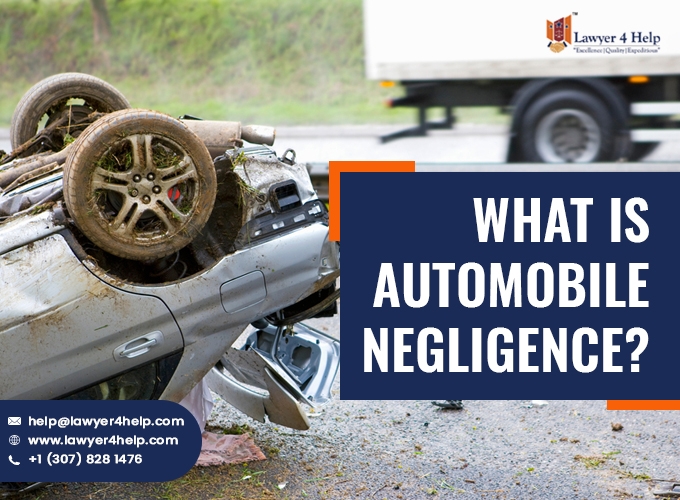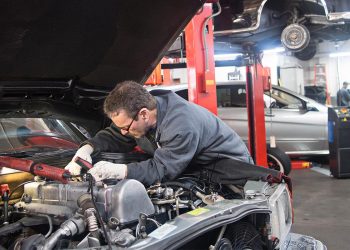Automobile negligence happens when a driver does not operate the motor vehicle properly or reasonably safely; in that case, injury caused to others is known as automobile negligence. It’sour responsibility to take care of the rules and regulations of the road and have to follow and respect them while driving the vehicle.
Most crucial is that when a driver gets permission to drive the vehicle with all legal issues, operating a motor vehicle is a privilege. Driving a motor vehicle is your responsibility to take care of other passengers with that off-side and on-side of the road.
Negligence is a situation when someone has to act with reasonable care, and that result of failure sometimes becomes unintentional harm or injury to any other person. The negligent driver is chargeable for damage by their reckless or rash driving. For example, many car accidents happen on-road due to unresponsiveness, carelessness, or negligent behavior behind the wheel. Sometimes there’s a chance that victims of negligent driver accidents may be able to receive the remuneration for injuries, suffering from pain, and lost wages.
Difference between an accident and Negligence?
In this world, nobody is perfect; everyone lacks somewhere. Like that, once you operate the vehicle, you understand the responsibility that comes with driving. But sometimes accidents might happen.
An accident is explained as an unfortunate incident that happens unexpectedly and unintentionally, which results in damage or injury. In other words, we can say an accident is an accident in which no one could have reasonably envisioned.
No individual can win the case against someone responsible for an injury if that injury has been caused by an uncomplicated accident.
While Negligence is “a failure to exercise the care towards others which a reasonable person would do in the circumstances, or taking action which such a reasonable person would not.
Although auto accidents are common daily occurrences, and few would qualify as true negligence accidents.
Here are some ways that a person could be deemed at fault due to Negligence. Some of these are:
Fail to Control Speed – Sometimes, speed is considered an attribute fault on a collision like driving fast, rash driving than the posted speed limit, reckless driving on the improper roads, or moving the vehicle too slow from the current traffic flow.
For Example: If the driver is driving too fast and breaking the speed limit rules and it was a factor in the crash, else if you were speeding, you could be held fully or partially liable for the collision, and the driver could be viewed as the fault driver.
Failure of signal – If you are crossing the path or changing lanes, you need to ensure the signal and other vehicles. If your failure to signal results in a collision, the fault will be considered for the driver. Violating traffic signals.
Failure to maintain distance – If you are following behind another vehicle, you should have to maintain distance between you and another vehicle to get the proper time to control the car.
Failure to pay attention – While driving the car, you are busy talking to any other person sitting in the car or on the car phone call and getting distracted while texting others. Your mind gets diverted, which results in an accident. Otherwise, if you drive the vehicle while drinking alcohol or consuming drugs, it leads to an accident.
Failure of Vehicle – The driver has to take care of the vehicle while starting a drive and check all the vehicle’s brakes and parts. If anything is not working properly, it has caused a collision.
Illegal turns – On the road, if a driver takes a wrong turn or u-turn or prohibited turns that harm other people for that driver is responsible.
A few examples are also Driving the vehicle while fatigued, aggressive driving behavior.
Auto Negligence Lawsuits:
There are some elements to consider as a negligence claim. In most cases, we can negotiate to bring a negligence-based lawsuit before moving ahead to court.
1. Duty of Care: A duty of care is owed to another person in any situation involving the possibility that your actions could predictably harm another person. All drivers must drive safely and obey all traffic laws at all times.
2. Breach of duty: It must be proven that the accused breached his duty to drive safely. An example of this could be if the accused did not obey traffic signs. This could be viewed as a breach of duty of care. Violations occur when a person does not act reasonably or prudently like anyone else in the same circumstances. This is a common point of contention in motor vehicle accident lawsuits
3. Cause: The plaintiff is responsible for proving that the defendant’s violation is what caused the plaintiff’s injuries. If they cannot prove it, or if the defendant’s actions did not cause the plaintiff’s injuries, the defendant is unlikely to be held responsible.
4. Damage: The claimant is also responsible for calculating losses and costs associated with damage and quantifying them in monetary amounts. If it is impossible to determine this amount in real figures easily, their damages may be reduced or even refused.
While your insurance company remains uninformed about your options, then our experienced and friendly staff will always be available for you to discuss the law regarding automobile negligence.
We are always willing to offer FREE advice and consultation for your matters (accident) that you or someone else is involved in.
If you find yourself a victim of automobile negligence, contact Lawyer4help at +1 (307) 8281476.







